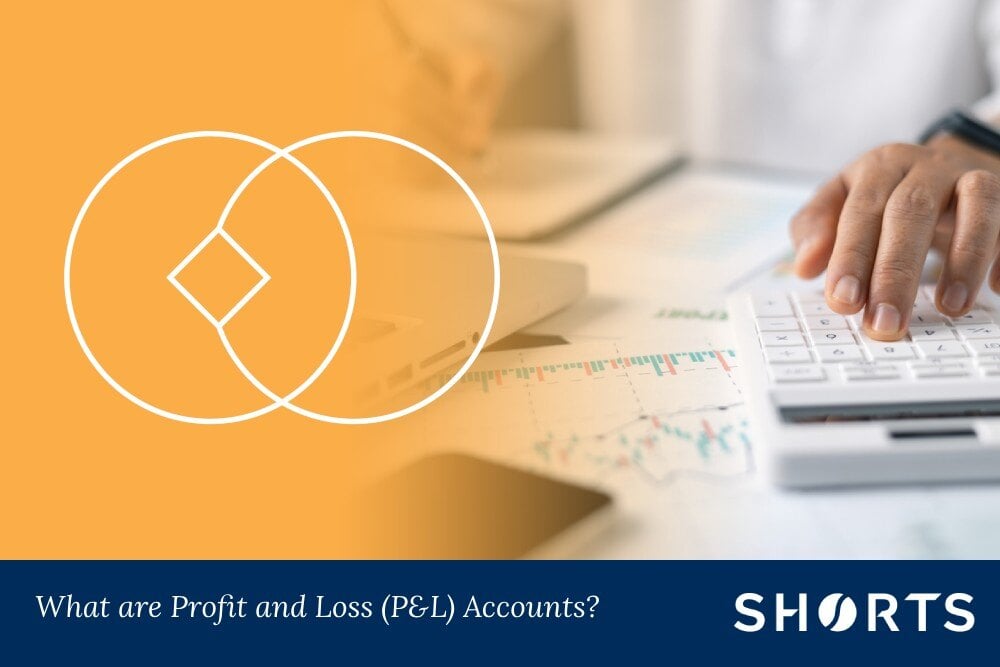
Understanding your business’s performance doesn’t have to be complicated. Profit and loss (P&L) accounts show where your money comes from and where it goes, helping you make smarter financial decisions. This blog will introduce profit and loss accounts, provide examples, and explain what you need to know about this key component of business accounting and financial reporting.
What are profit and loss accounts?
Profit and loss accounts (P&L), also known as income statements, are financial reports for businesses. They provide a snapshot of economic performance for a specific period, typically a financial year or a quarter or month end. P&L reports form an integral part of management accounts to track a business's performance.
P&L accounts serve some important functions for business leadership, as well as their accountants and investors.
- Financial performance: P&L accounts clearly show a company's profitability and financial health.
- Decision-making: Investors, lenders, and management can use P&L accounts to make informed decisions about a company's present and future health, strategy and direction.
- Ensuring compliance: UK businesses must submit their profit and loss accounts to HMRC as part of their ongoing tax obligations. These accounts enable HMRC to assess the correct amount of tax that a business owes. Failure to submit results in penalties or legal consequences.
- Benchmarking: Profit and loss accounts can also compare a company's performance to industry standards or competitors, making them valuable for companies seeking buyers or investors.
What should be included in profit and loss accounts?
- Revenue: All income generated from the company's primary trading operations. This typically covers the sale of goods, services, or licenses.
- Cost of sales: The direct costs of producing/acquiring the goods sold or the provision of services. This includes the cost of materials, labour, and manufacturing.
- Gross profit: The difference between revenue and cost of sales.
- Distribution costs: Expenses related to the delivery and distribution of products or services.
- Administrative expenses: Costs incurred in managing the overall business, such as staff salaries, premises rent, and utility bills.
- Other operating expenses: Additional costs not covered by distribution or administrative expenses.
- Operating profit: The profit remaining after subtracting operating expenses from gross profit.
- Interest costs: Expenses related to borrowing money.
- Taxation: The amount of income tax payable.
- Profit for the period: The final result after deducting interest and taxation from operating profit.
Profit and loss account example
| Item | Amount (£) |
| Revenue | 1,000,000 |
| * Sales of Product A | 500,000 |
| * Sales of Product B | 300,000 |
| * Sales of Product C | 200,000 |
| Cost of Sales | 600,000 |
| * Direct Materials | 300,000 |
| * Direct Labour | 200,000 |
| * Factory Overhead | 100,000 |
| Gross Profit | 400,000 |
| Distribution Costs | 100,000 |
| * Sales Salaries | 50,000 |
| * Advertising | 30,000 |
| * Delivery Expenses | 20,000 |
| Administrative Expenses | 150,000 |
| * Office Salaries | 80,000 |
| * Rent | 30,000 |
| * Utilities | 20,000 |
| * Insurance | 10,000 |
| Other Operating Expenses | 50,000 |
| * Legal Fees | 20,000 |
| * Bad Debts | 15,000 |
| * Misc Expenses | 15,000 |
| Operating Profit | 100,000 |
| Interest Costs | 20,000 |
| Taxation | 30,000 |
| Profit for the Period | 50,000 |
The above profit and loss account example is provided for illustrative purposes only and does not represent the actual financial performance of any specific company. The figures used are hypothetical and may not reflect real-world circumstances. It's important to consult with a financial professional for accurate and tailored advice.
What is the difference between a balance sheet, a profit and loss account and a cash flow statement?
Balance sheet and profit and loss account are two fundamental financial statements. While they serve different purposes, they work together to provide a clear picture of a company's financial position.
A balance sheet gives a snapshot of a company's financial position at a specific moment. A profit and loss account is a financial statement that shows a company's revenue, expenses, and net profit or loss over a specific period.
In comparison, a cash flow statement displays incoming and outgoing cash over a specific date period. This includes money generated from sales of items and services, expenditures from purchases, and other activities including loan.
Are there UK regulations that apply to P&L accounts?
UK companies are generally required to prepare their financial statements according to the Financial Reporting Standards (FRS) or International Financial Reporting Standards (IFRS).
Which taxes are affected by P&L accounts?
The following tax liabilities are typically shown in the Balance Sheet but they are affected/informed by a company’s profit and loss accounts. For example, payroll taxes such as PAYE will be linked to the wages costs shown in the P&L as without them, no PAYE would be due.
- Corporation Tax
- VAT
- Capital Gains Tax
- Payroll Taxes (such as NICs)
For specific companies, the figures in P&L accounts may also influence other taxes, such as stamp duty, landfill tax, or environmental taxes.
Profit and loss accounts – summary
- Profit and loss accounts summarise a business’s revenues, costs of sale, and expenses during a specified period.
- Along with a balance sheet and cash flow statement, it is one of three financial statements typically issued monthly, quarterly or annually.
- Profit and loss accounts help businesses assess financial health and make better budgeting, pricing and efficiency decisions.
- Profit and loss accounts are also essential for financial reporting, tax compliance and securing investment/finance.

Alicia Williams
I am the Director of the Genus team at Shorts, a chartered certified accountant and Xero specialist. I specialise in cloud-based accounting solutions, particularly Xero and add-on software, helping clients streamline processes and improve efficiency. As a Client FD, I work closely with businesses to give them a clear understanding of their current position and support their long-term planning and growth.
View my articles